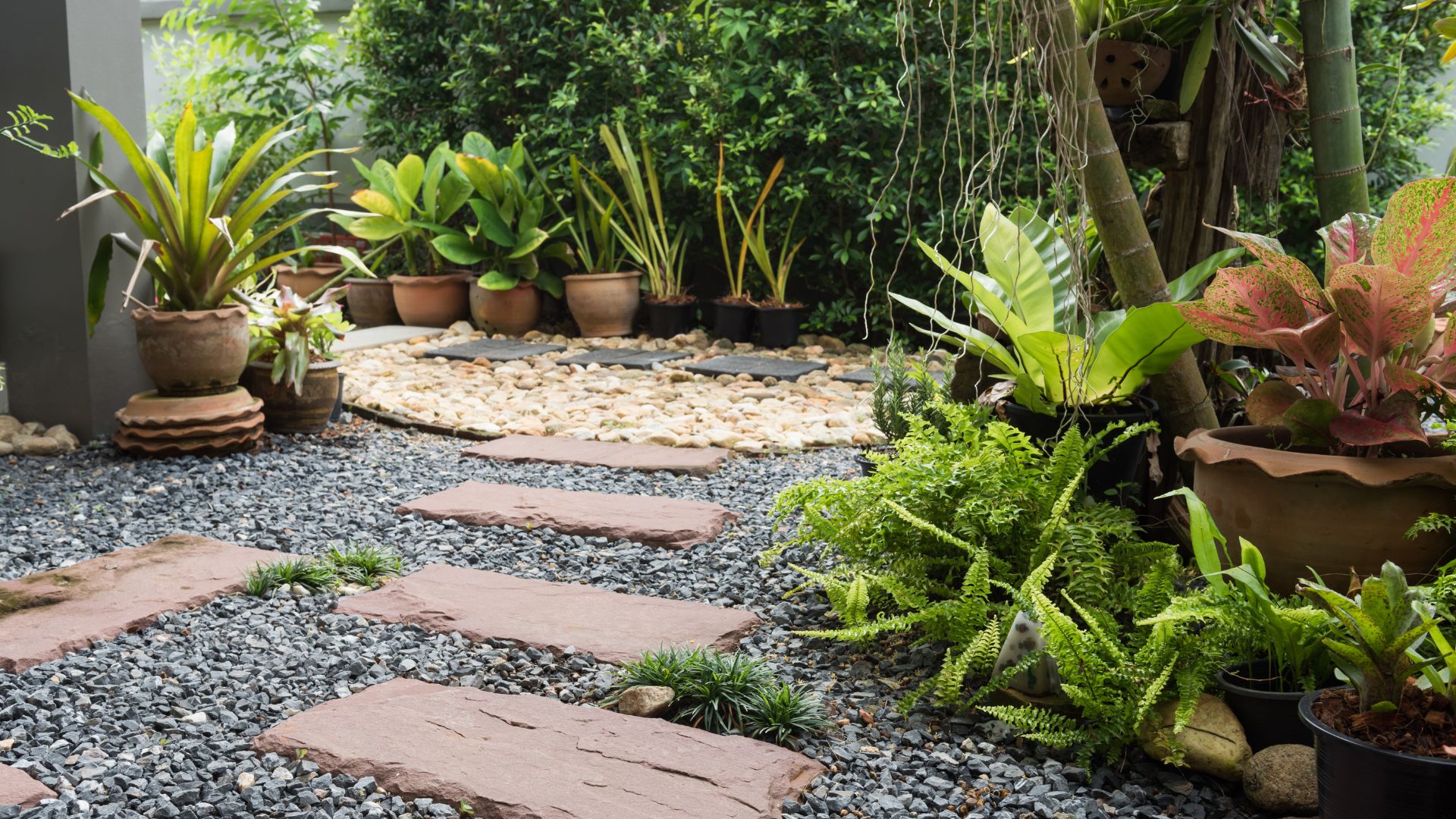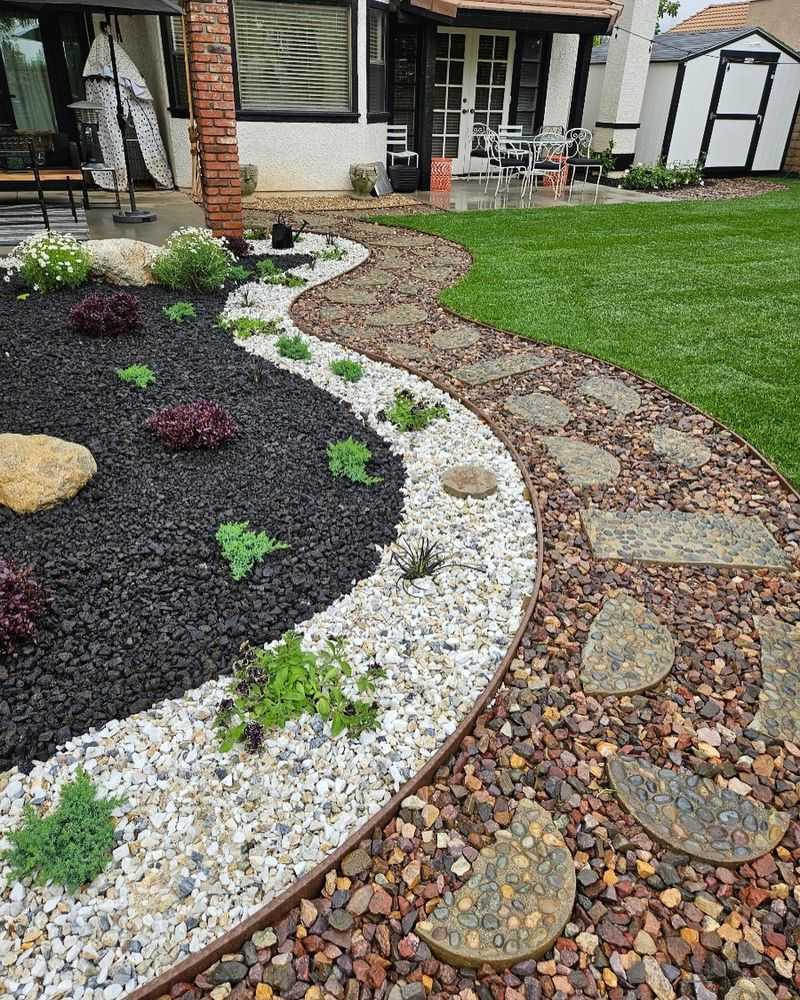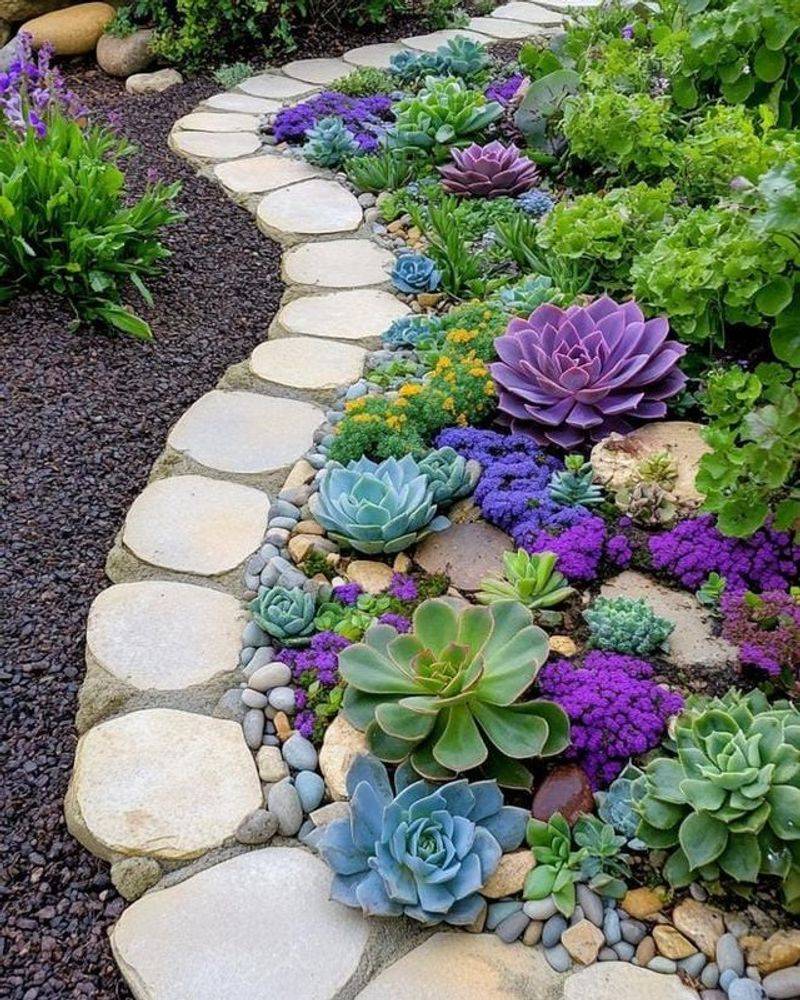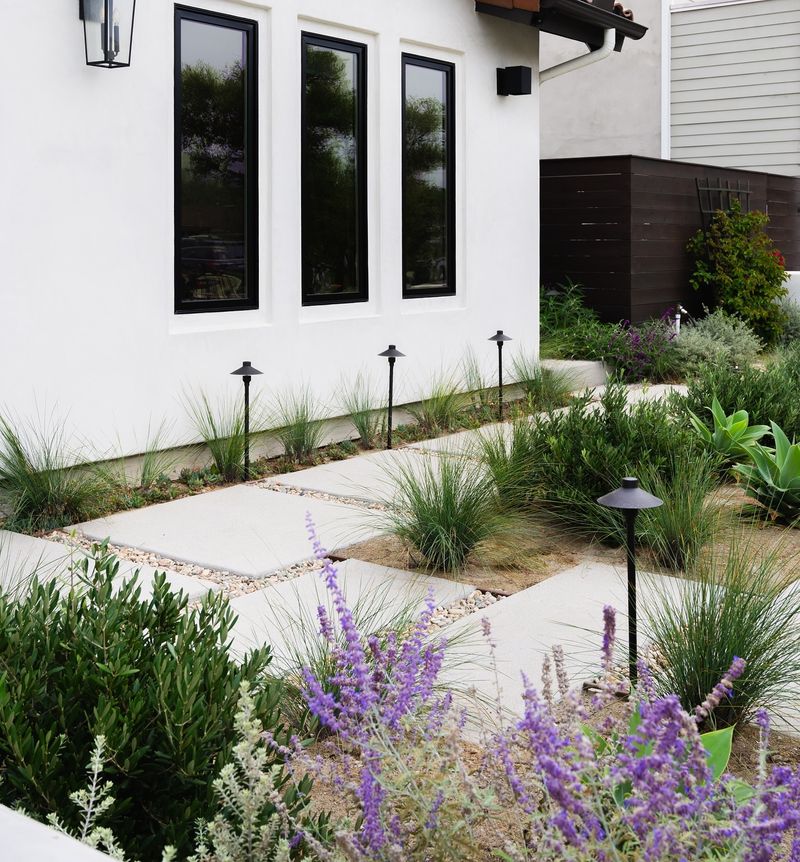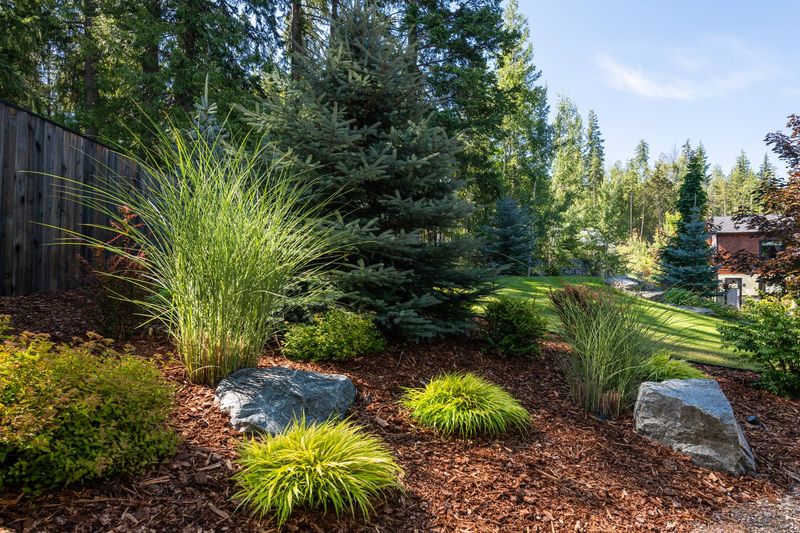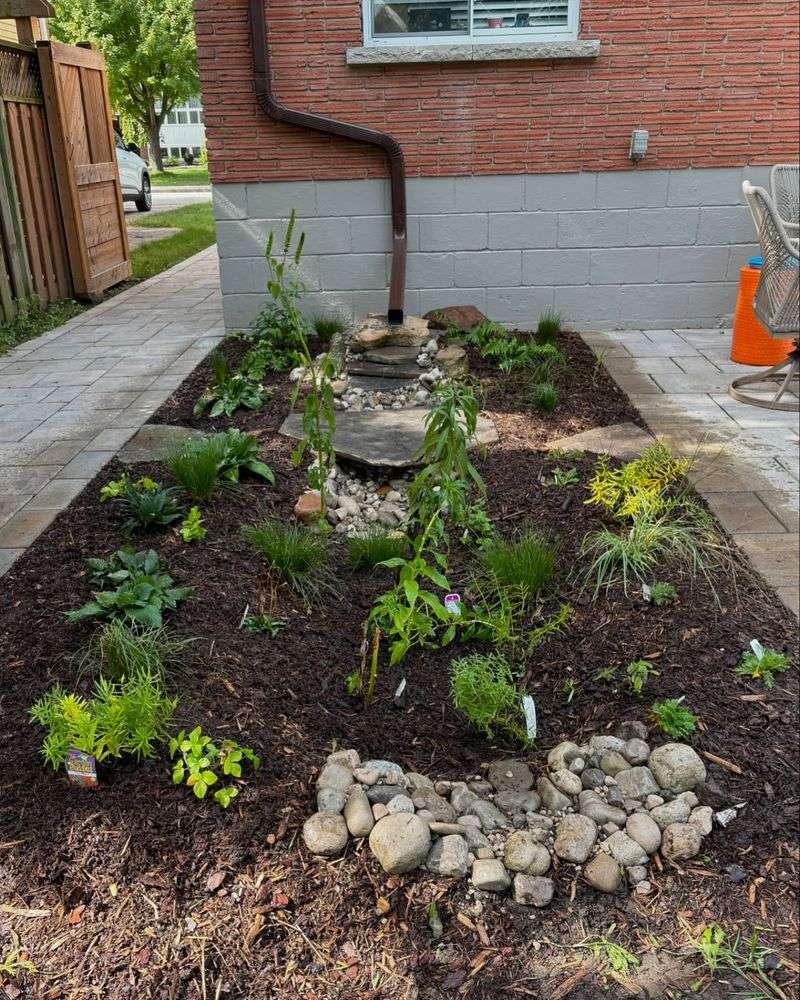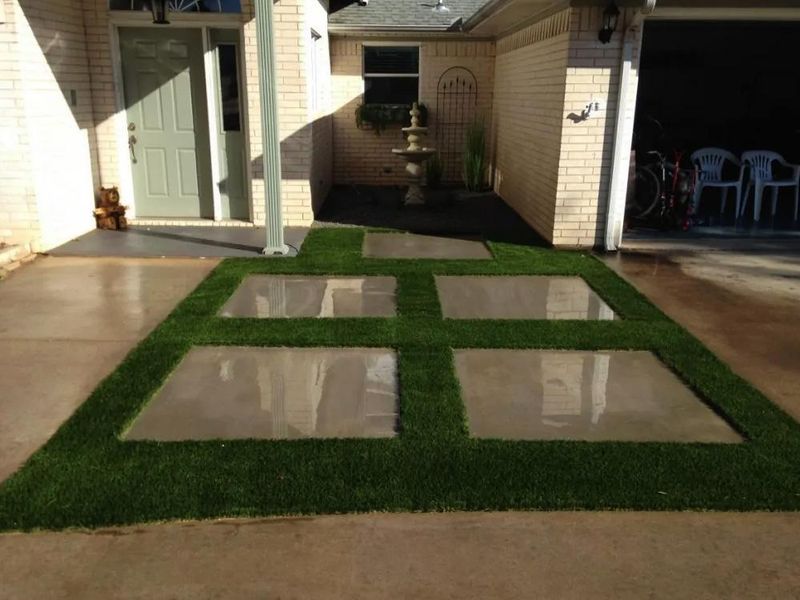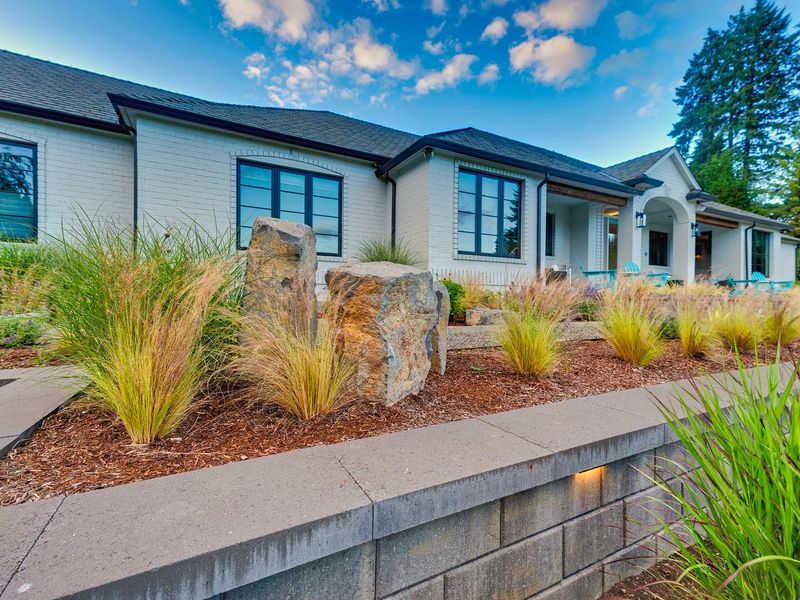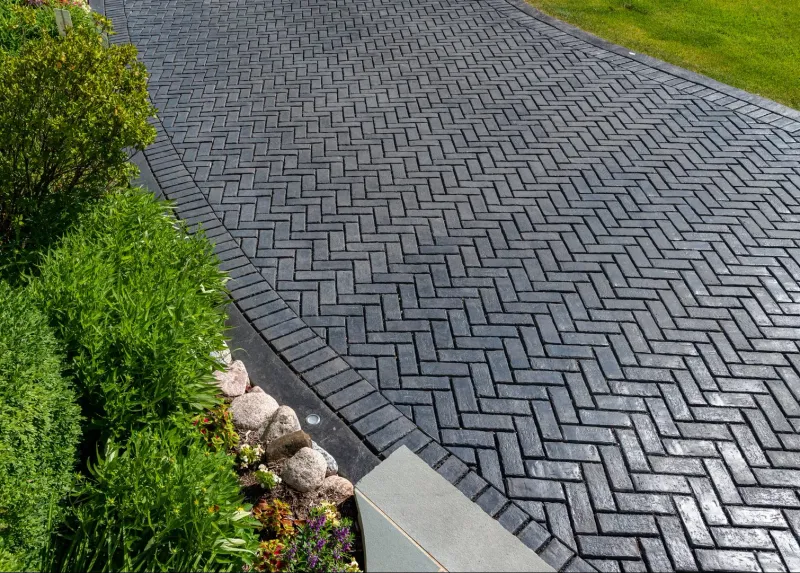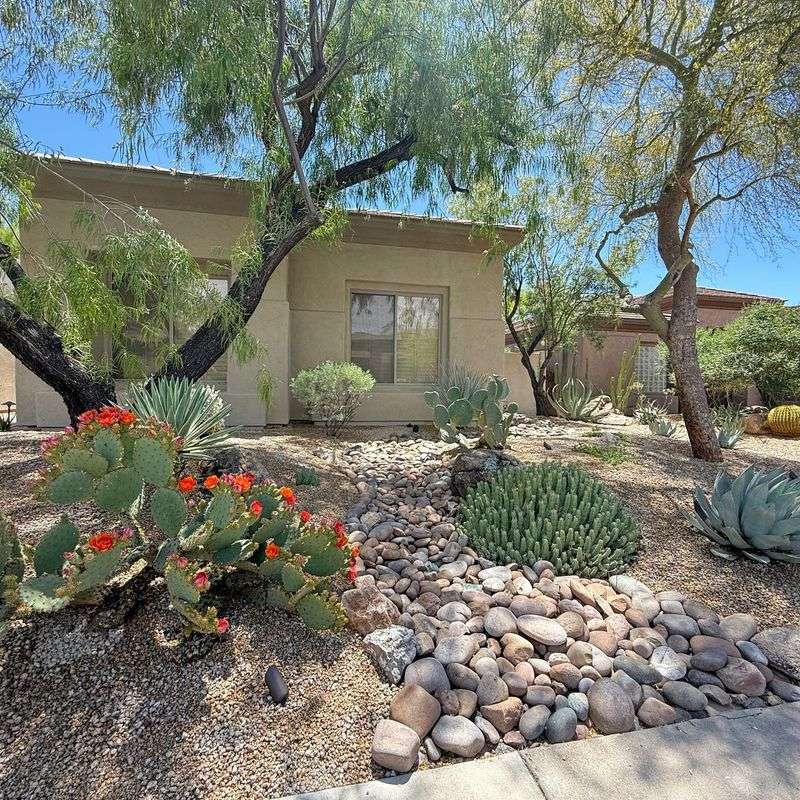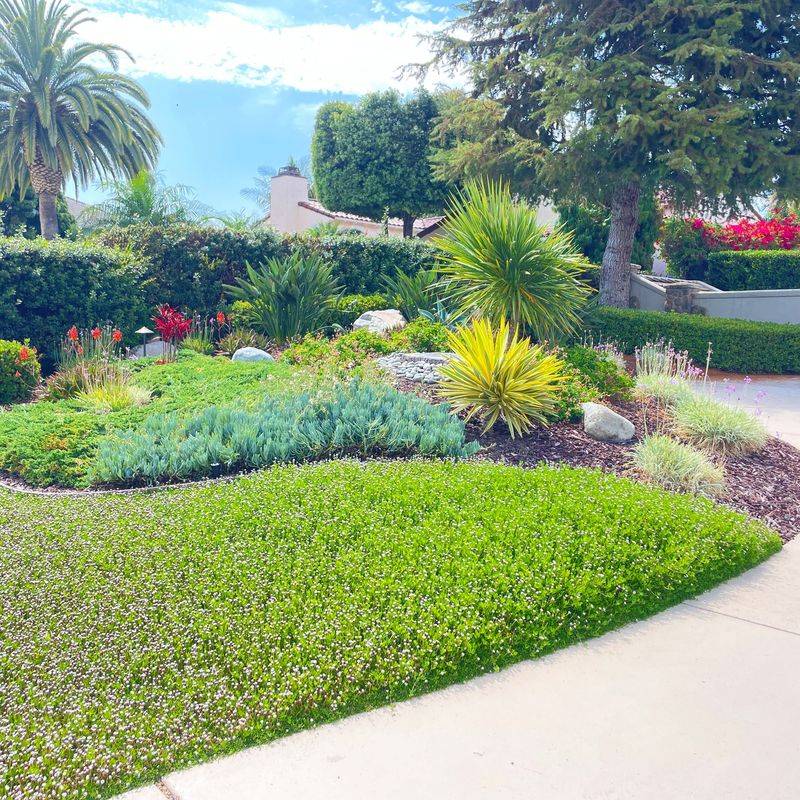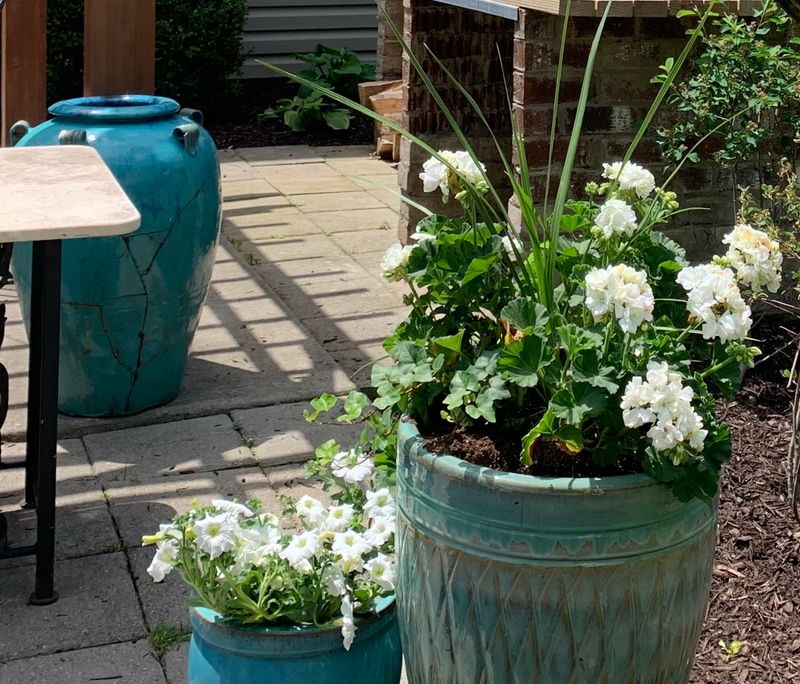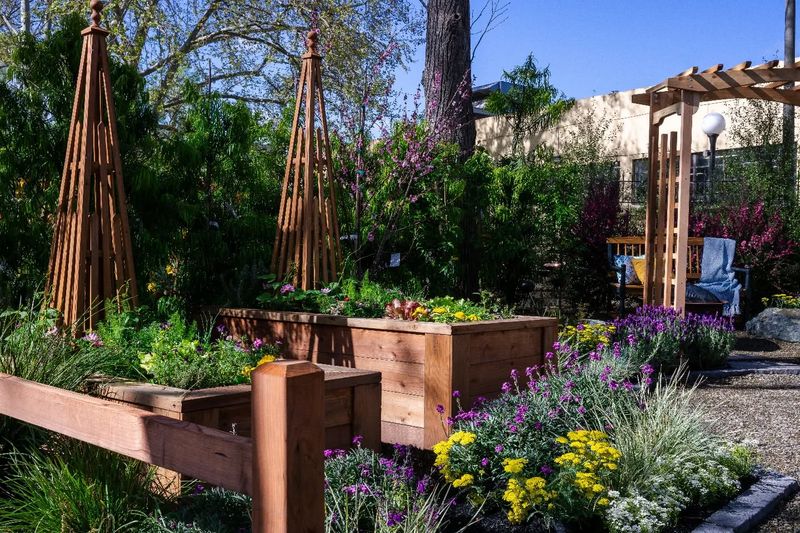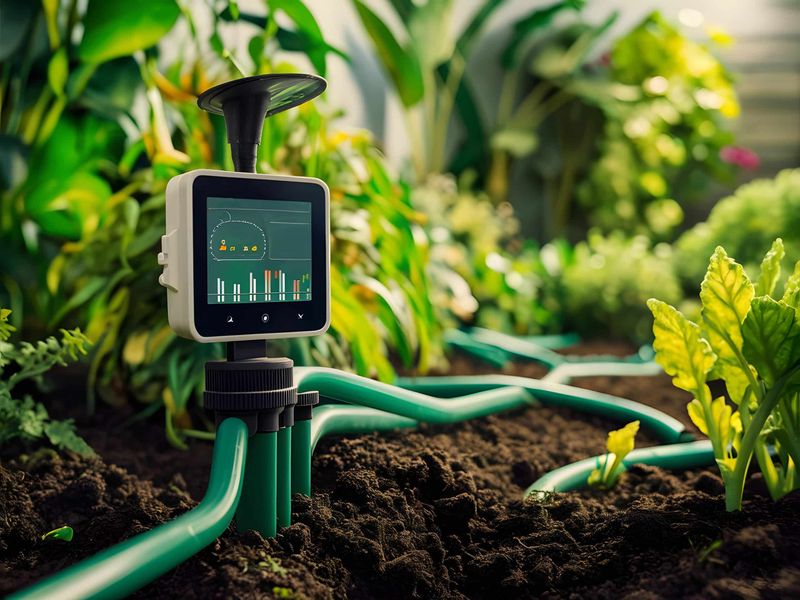Living in an area where water is scarce doesn’t mean your front yard has to look like a barren wasteland. After my neighborhood faced water restrictions last summer, I discovered that drought-tolerant landscaping can actually look more interesting than traditional lawns.
Many homeowners mistakenly believe water-saving yards must be all rocks and cacti. The truth is you can create stunning, colorful landscapes that require minimal irrigation while still making your home the envy of the block.
My neighbor transformed her thirsty lawn into a drought-resistant showcase after her water bill tripled during a three-month dry spell. Now her yard needs watering just once a month, yet it draws more compliments than ever before.
1. Native Plant Garden
Plants that naturally grow in your region already know how to handle local rainfall patterns. They’ve evolved to thrive in your specific climate without extra help from sprinklers or hoses.
I switched to natives three years ago and haven’t looked back. My yarrow, black-eyed Susans, and purple coneflowers attract butterflies while needing almost no supplemental water once established.
The best part? These plants look like they belong, creating a landscape that connects with the surrounding environment rather than fighting against it.
2. Gravel and Stone Features
Remember when gravel yards meant boring gray rocks and nothing else? Those days are gone. Modern stone gardens combine different colored gravels, boulders, and carefully placed drought-resistant plants for year-round visual interest.
The secret is using varying sizes and colors of stone. Small pebbles create pathways while larger decorative rocks serve as focal points.
Since installing our stone garden, we’ve saved roughly 30% on our water bill compared to our old lawn. Plus, there’s no more mowing on hot weekend afternoons!
3. Succulent Showcase
Succulents store water in their fleshy leaves, making them perfect for dry conditions. What surprised me most was their incredible variety – from tiny rosettes to tall, sculptural plants in blues, greens, purples, and even oranges.
Creating a succulent garden means thinking like an artist. Group similar colors together or create a rainbow effect. Use different heights to add dimension.
For colder climates, choose hardy varieties like Sempervivum (hens and chicks) or Sedum, which can survive freezing temperatures while still providing that water-wise aesthetic.
4. Mediterranean-Inspired Landscape
Ever notice how Mediterranean gardens feel both elegant and relaxed? That’s because they’re built around plants adapted to hot, dry summers and mild, wet winters – perfect for water conservation.
Lavender, rosemary, and olive trees form the backbone of this style. Their silver-gray foliage naturally reflects sunlight, helping them survive intense heat without excessive water.
My friend added a simple stone path through her Mediterranean garden, and the fragrance when you walk to her front door is amazing. The herbs also provide fresh ingredients for cooking – a practical bonus!
5. Decorative Mulch Beds
Mulch does more than just look nice – it’s like a protective blanket for your soil. By reducing evaporation, it keeps moisture where plant roots can access it, cutting water needs by up to 50%.
Beyond basic wood chips, consider decorative options like cocoa hulls, pine straw, or tumbled glass. These materials add texture and color while serving a practical purpose.
Last spring, I replaced half my front lawn with mulched planting beds edged with steel borders. The clean lines give the yard a modern look, and I’ve cut my watering time in half.
6. Rain Garden Installation
Rain gardens work like natural water collection systems. They capture runoff from your roof and driveway, allowing it to slowly seep into the ground instead of flowing away.
The trick is creating a shallow depression planted with species that can handle both occasional flooding and periods of dryness. Think of it as working with nature’s patterns rather than fighting them.
Since adding a small rain garden near my downspout, I’ve noticed fewer puddles after storms, and the plants thrive without supplemental watering even during dry spells.
7. Artificial Turf Accent Areas
Today’s fake grass isn’t the plastic-looking stuff from the past. Modern artificial turf looks surprisingly natural while using zero water and requiring minimal maintenance.
The key is using it strategically – not covering your entire yard, but creating defined green spaces that complement other drought-tolerant elements. Small turf areas provide visual relief among rock gardens or gravel.
After installing a patch of high-quality artificial grass in our front yard play area, we’ve enjoyed year-round green without the guilt of watering. The kids and dog still have a place to play!
8. Dry Creek Bed Feature
Dry creek beds turn potential drainage problems into design opportunities. Arranging rocks to mimic a natural waterway creates visual interest even when completely dry.
During rare heavy rains, these channels actually serve their intended purpose, directing water flow away from your foundation. The rest of the time, they’re simply beautiful landscape features.
We installed a winding dry creek bed with different-sized river rocks and planted drought-tolerant grasses along the edges. It looks like it’s always been there – a natural part of the landscape that needs zero irrigation.
9. Ornamental Grass Groupings
Ornamental grasses bring movement and sound to a landscape with almost no water requirements. When the breeze blows through their slender blades, the whole yard seems alive.
Grouping different varieties creates drama through contrasting heights, colors, and textures. Tall feather reed grass can serve as a backdrop for shorter blue fescue or Mexican feather grass.
The best part about my grass garden? It looks completely different each season – from fresh spring growth to summer fullness to autumn’s golden hues – all without turning on the sprinklers.
10. Permeable Paving Solutions
Solid concrete driveways waste precious rainwater by directing it to storm drains. Permeable pavers allow water to filter through gaps and nourish the ground below, reducing the need for additional irrigation.
Options range from traditional brick patterns with sand-filled joints to modern systems specifically designed for water infiltration. Some even allow grass to grow between pavers for a greener look.
Our neighbors installed permeable pavers in a herringbone pattern last year. During rainstorms, you can actually see the water disappearing between the bricks instead of forming puddles or running off.
11. Desert-Inspired Xeriscape
Desert landscaping has evolved far beyond just cacti and rocks. Modern xeriscapes blend sculptural succulents, flowering desert plants, and carefully placed boulders to create year-round interest.
The trick is embracing the natural beauty of arid-adapted plants rather than trying to mimic traditional gardens. Agaves, yuccas, and desert marigolds offer distinctive shapes and surprising bursts of color.
A family down my street created a mini desert landscape that’s absolutely stunning when the ocotillo and penstemon bloom. Their water usage dropped by 80% compared to their previous traditional lawn.
12. Drought-Tolerant Groundcover Tapestry
Groundcovers do exactly what their name suggests – they cover ground that would otherwise need water-hungry grass. The right selections create a living carpet that suppresses weeds while requiring minimal irrigation.
Creeping thyme releases a wonderful scent when walked upon. Sedum spreads quickly to fill bare spots. Ice plant produces brilliant flowers despite neglect.
My sister replaced her front lawn with a patchwork of different groundcovers three years ago. From our perspective on the street, it looks like a beautiful tapestry of textures and colors that changes with the seasons.
13. Potted Plant Arrangements
Container gardening lets you create water-efficient focal points while keeping flexibility in your landscape design. Group pots of different heights for maximum impact near entryways or along paths.
The secret is choosing the right containers – unglazed terra cotta looks beautiful but dries out quickly. Glazed ceramic or composite materials retain moisture longer, meaning less frequent watering.
For our front porch, I arranged drought-resistant plants like compact agave, trailing rosemary, and dwarf ornamental grasses in matching blue pots. They create a welcoming entrance that needs watering just once weekly.
14. Edible Drought-Resistant Landscape
Who says front yards can’t be both beautiful and productive? Many food-producing plants are naturally adapted to low-water conditions. Rosemary, sage, and thyme form attractive hedges while providing fresh herbs for cooking.
Fruit trees like pomegranate and fig add height and seasonal interest. Once established, they need surprisingly little supplemental water to produce delicious harvests.
Our front yard herb spiral looks decorative while providing fresh seasonings year-round. Visitors are always surprised to learn that the beautiful silvery plants lining our walkway are actually culinary herbs that rarely need watering.
15. Smart Irrigation Technology
Sometimes the biggest water savings come not from what you plant, but how you water it. Smart irrigation systems use weather data and soil moisture sensors to water only when plants truly need it.
Drip irrigation delivers water directly to root zones, eliminating the waste of overhead sprinklers. Some systems even connect to your smartphone, allowing you to monitor and adjust watering schedules remotely.
After installing soil moisture sensors and drip lines in our front beds, our water usage dropped by 60% while plant health actually improved. The system waters deeply but infrequently, encouraging stronger root growth.

